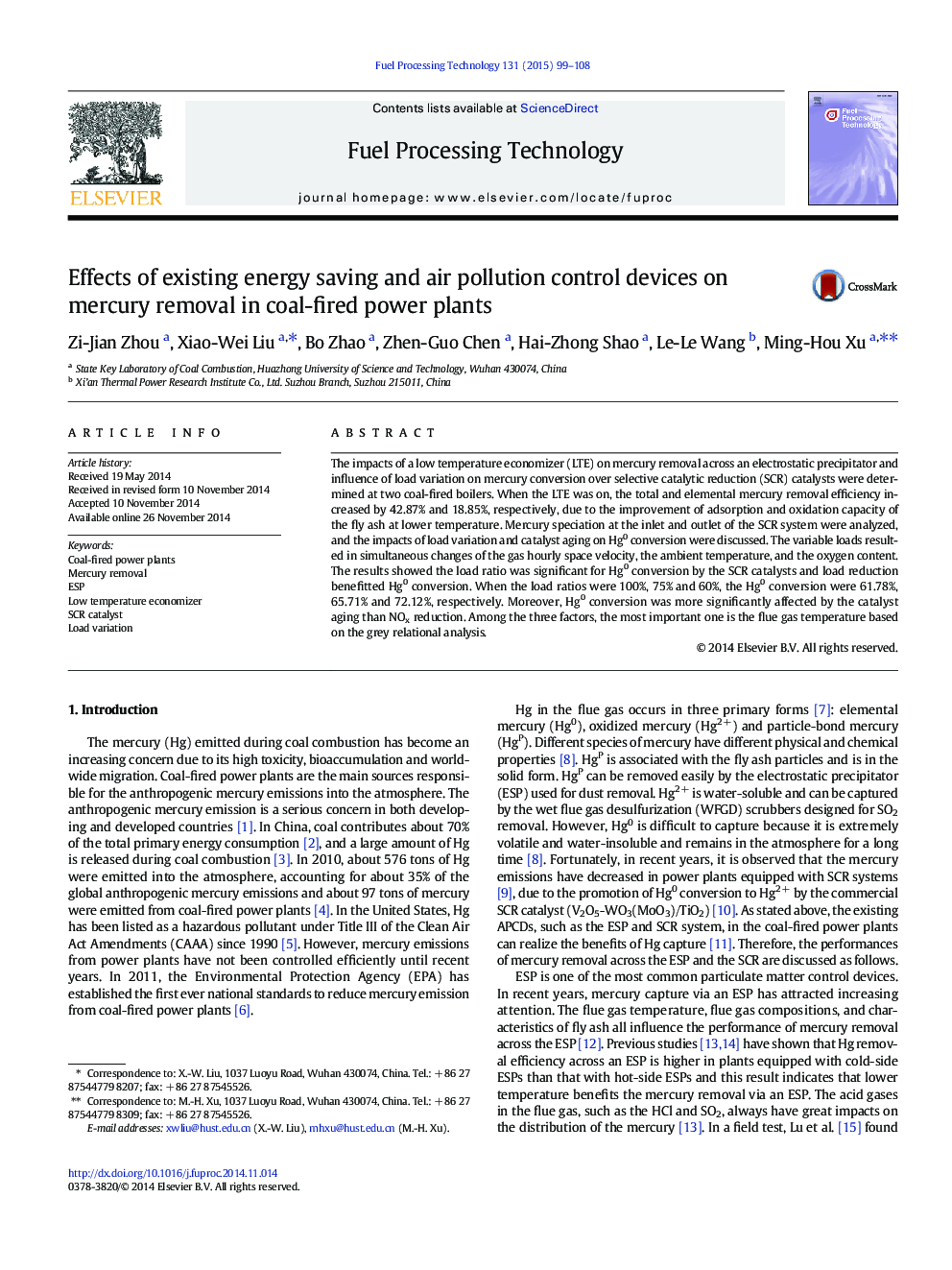| کد مقاله | کد نشریه | سال انتشار | مقاله انگلیسی | نسخه تمام متن |
|---|---|---|---|---|
| 209345 | 461668 | 2015 | 10 صفحه PDF | دانلود رایگان |
• Low temperature economizer promoted Hg removal performance by ESP in the test.
• Unburned carbon adsorbed more Hg at lower temperatures caused by the LTE.
• Temperature is the most sensitive factor on Hg0 oxidation by SCR catalysts.
The impacts of a low temperature economizer (LTE) on mercury removal across an electrostatic precipitator and influence of load variation on mercury conversion over selective catalytic reduction (SCR) catalysts were determined at two coal-fired boilers. When the LTE was on, the total and elemental mercury removal efficiency increased by 42.87% and 18.85%, respectively, due to the improvement of adsorption and oxidation capacity of the fly ash at lower temperature. Mercury speciation at the inlet and outlet of the SCR system were analyzed, and the impacts of load variation and catalyst aging on Hg0 conversion were discussed. The variable loads resulted in simultaneous changes of the gas hourly space velocity, the ambient temperature, and the oxygen content. The results showed the load ratio was significant for Hg0 conversion by the SCR catalysts and load reduction benefitted Hg0 conversion. When the load ratios were 100%, 75% and 60%, the Hg0 conversion were 61.78%, 65.71% and 72.12%, respectively. Moreover, Hg0 conversion was more significantly affected by the catalyst aging than NOx reduction. Among the three factors, the most important one is the flue gas temperature based on the grey relational analysis.
Journal: Fuel Processing Technology - Volume 131, March 2015, Pages 99–108
